
Carrie Tree
We catch up with Brighton folk singer-songwriter Carrie Tree and find out just why her second album took so long
 hen you’ve been described as “a phenomenal singer-songwriter” by no less a personage than Carly Simon, you know you must be doing something right. Ms Simon isn’t the only well-known supporter that Carrie Tree can lay claim to, either: she’s toured with Marillion and Rumer, worked with members of Ladysmith Black Mambazo and was part of Andy Barlow from Lamb’s spin-off project Lowb.
hen you’ve been described as “a phenomenal singer-songwriter” by no less a personage than Carly Simon, you know you must be doing something right. Ms Simon isn’t the only well-known supporter that Carrie Tree can lay claim to, either: she’s toured with Marillion and Rumer, worked with members of Ladysmith Black Mambazo and was part of Andy Barlow from Lamb’s spin-off project Lowb.
A regular on the UK green/alternative festival circuit, playing the likes of Buddahfields and Shambala as well as, of course, Glastonbury, Brighton-based Carrie’s highly personal brand of gentle, acoustic folk-pop was first heard on her 2009 debut album The Kitchen Table. And now she’s back with second long-player Home To The Invisible, much of which was recorded in South Africa. So we figured it was time we got her on the phone…
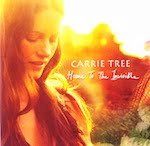 We reviewed a performance of yours at Shambala festival a couple of years ago, and said “look out for her second album, coming soon”. But it’s only just coming out now… what happened there?
We reviewed a performance of yours at Shambala festival a couple of years ago, and said “look out for her second album, coming soon”. But it’s only just coming out now… what happened there?
“Yes, it’s taken its time, you could say. But now it’s due out at the end of March. I have done a couple of EPs in the past year as well though, to be fair!”
How would you say this album differs from the first?
“I knew from the first album how much energy and focus it takes, so I knew I needed a clear idea of what I wanted to do. I ended up working with some producers but it took me a while to work out how I wanted to go at it. Really it’s always just an experiment… there’s no right or wrong way of doing things. So I took this second album as a treasure hunt and just enjoyed myself. I didn’t let the fear take over.
“On this album I’ve experimented more, got more rhythmical, and that’s come through playing with different musicians. I love world music and different ethnic instruments, so I’ve been playing around with lots of African and Indian instruments. And the songwriting has also got more… because I’m playing with other musicians, that’s affected the writing and the finalising of songs. I used to write entirely on my own, and all my songs were very quiet and intimate. But with the songs for the second album, generally I’d take the songs to the band 80 per cent finished, and we’d start playing them live, and that would change the final structure of the songs. There are more instrumental parts now. I’m breathing more.
“That’s another reason the album’s taken a while: it just takes a really long time for these sorts of songs. They’re quite fussy in terms of what they need. I kept trying to keep the space and the dynamics in the songs.”
Would you say this is more of a ‘band’ album than a solo effort?
“Yeah, it’s half a band effort. The band’s still forming, but the album’s co-produced with my percussionist, and a lot of it was written sitting with the percussionist and producer and coming up with landscapes. For instance, one track sounds like a desert to me, so we brought in instruments to colour that in, like a painting. That’s the kind of collaborative process that was involved, whereas the first album was much more of a ‘kitchen table’ job.”
What about the writing of the lyrics? Is that collaborative, too?
“Not really, that’s still me, done on my travels and when I need to understand something. I’d say it’s done alone 99 per cent of the time, although I co-wrote a couple of songs with my producer.
“I’ve also co-written with Andy Barlow from Lamb. He emailed me while I was in Australia, saying that he’d heard my music via friends and we met up and made a little band for a while. I sing on his solo album. It was an interesting challenge to work in a different way: Andy’s very electronic, and he’s very clear in his vision of the sound he wants.”
Is that something you’d like to do more of?
“I would – it’s slightly terrifying but also really healthy! Your songwriting muscles need to be used as much as possible and it’s good to flex them with different people and different instruments. The thing is, writing for me was such a solo, personal thing for so long, it was like sharing my diary with people. When you’re co-writing, it can’t be that personal.”

Carrie Tree
Speaking of matters personal… at one of our Songwriting Live events, someone suggested that women are more inclined to write about their feelings, men are more inclined to tell stories. Do you – as the first female songwriter we’ve spoken to since! – think that’s true?
“I’ve never really thought about it but I guess it depends on the person. Lots of male songwriters write songs that are very personal and from the heart… but I guess traditionally women might be considered more likely to express themselves. I don’t know, maybe men are really writing about themselves but putting it in story form!”
Who would you say has most influenced your songwriting?
“It was definitely women songwriters at the beginning. Karen Carpenter’s was the first voice I fell in love with, Joni Mitchell, the Cranberries when I was a moody teenager! Later on I got into Nick Drake, Bob Dylan, John Martin, Jose Gonzales. Most recently I’ve been really into Lhasa De Sela, her album The Living Road is amazing.
“And Iron & Wine, certainly on the production side of things. The production of Iron & Wine’s early stuff is amazing, it’s got really exciting percussion on it. I like the way they don’t feel the need to fill everything in. I love African music, it’s my biggest passion, even though I’m an English singer-songwriter from Surrey! So I’ve been trying to work those rhythmic, melodic influences in. That’s what I’m most interested in at the moment. Making it ‘bigger’ without it being in a rock, all-filled-in, really loud way.
What can you tell us about your songwriting habits/technique?
“Well, I’ve got notebooks overflowing with song ideas, and then of course there’s my trusty iPhone with hundreds of voice recordings on it. I do like writing with pen and paper though, it never feels quite as romantic singing into your iPhone.
“Usually, the melody usually comes first, but I do write a lot of lyrics that don’t end up getting put into songs. It used to be different, but now it’s much more melody-led. When I was first writing, I was lyric-obsessed, but now because my senses have opened up so much more the lyrics are no longer the be-all and end-all once you’ve got a strong melody.
“Thank God I have songs so I can be a normal person in everyday life!”
“Thank God I have songs so I can be a normal person in everyday life! I find it much easier to write a song about things than I do to talk about them. And the music is the sound of what I’m feeling. If I have a strong melody and I’m into the music, the lyrics will just appear… but I use the music to inspire me, to put myself into that space. A lot of my songs, I have to listen back to them to work out what I’m signing about. Most of the time, I play guitar and words come… I’ll do that for 15 minutes or so and then I’ll edit it down and pick out the best bits.
“Rappers and poets start on a roll and it falls out of their mouths… it’s like that, it’s a place you can tap into. We have a subconscious part of ourselves, the dream part, and you can tap into that. I couldn’t say exactly where that comes from but I think a lot of people who write songs tap into that.”

Carrie Tree
How would you classify the music you make?
“I find it hard to put it in a category, I guess I’d call it folk music as in, it’s not pop or indie or jazz… folk is as close as you’d get. The space in the songs is very important, it’s quiet and intimate. It almost needs a classical level of listening. I write songs to feed the heart: my music seems to bring people to a calmer space. It puts more children to sleep than it makes people dance!”
With album number two under your belt, what are your aspirations now?
“I’m still trying to work that out! I’ve been back and forth, in and out of the music industry, because I don’t agree with a lot of what it is and what it does to musicians. I would love to make a living and have my music heard, but I don’t really want to be up on the main stage at Glastonbury. I don’t think I make that sort of music, anyway. What I care about more is that the music gets really listened to, I’m more interested in that than in the size of the crowd or the size of the stage. Whether it’s 10 people listening or 1000, it’s the level of intimacy that I love. That said, it can be done on a big stage: for instance I recently saw Iron & Wine at the Barbican.
What have been your own favourite venues to play?
“Lots of festival tents and small stages, basically. I played to 40 people unplugged in Hastings last night and that was amazing.”
Have you done many gigs outside the UK?
“I’ve done lots in Holland in the last five years – last year I went there seven times! I’ve also done quite a lot in Australia and America while I was away travelling but in the last five years it’s mainly been in Europe. I did play in South Africa last summer though.
“I lived in a shed in someone’s garden for two years”
“But mostly, I’ve really spent the last two years just getting this album together. It’s crowdfunded via Indiegogo… before I did that, I really couldn’t see how on Earth the album would ever get done. So I put all my energy into it and I got loads of support, and of course that meant I HAD to finish the album!
“I also got a manager halfway through, so we’ve spent the last year reorganising the foundations and working out how to get paid. It all takes time – for two years it’s been all input but hopefully that will turn back around. I lived in a shed in someone’s garden for two years! They tried to call it a cabin but really it’s a shed. But it had a woodburner in it so it was quite cosy, and I do like being close to the outside.
Lastly, you cover Portishead’s Glory Box on the new album. What inspired you to cover that song in particular?
“I’ve been singing it live for a long time and I just love it. At gigs, it’s a breath of fresh air, you feel the room relax. And people asked us to record it so we did. Just for fun, really – it was quite a spontaneous thing.”
Interview: Russell Deeks
Home To The Invisible is out now on Wild Cedar Records. To find out more about Carrie, visit her website and Soundcloud page. Below, you can watch the video to Mama Kita.

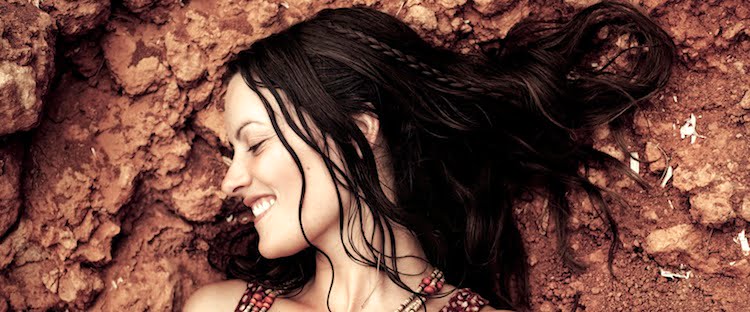


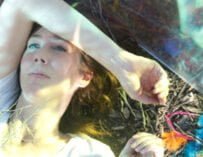
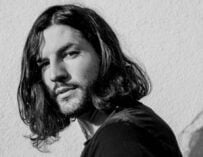
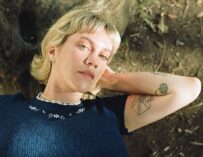

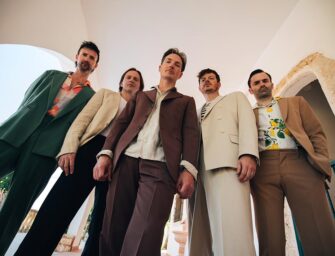

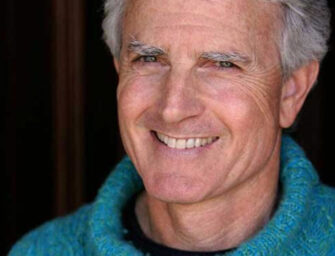

















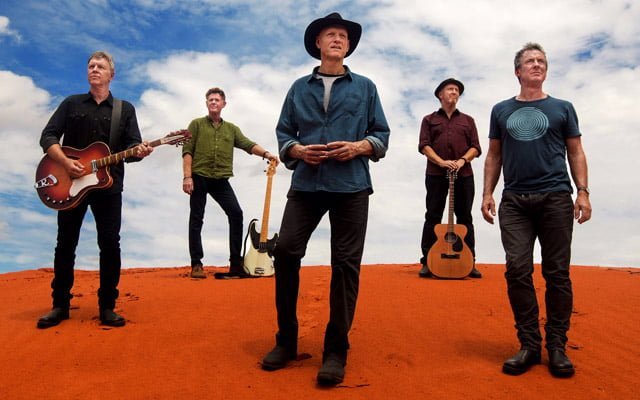






Related Articles